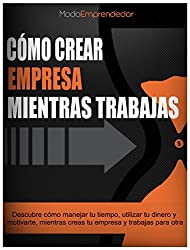
In this article you will learn everything about the SWOT analysis: what it is, how to do it, examples and questions that will help you clarify everything about your company or yourself.
If you are starting a business or have worked in one, you know that it is essential to be aware of the internal and external factors that could promote or prevent its proper development.
If you want to evaluate these factors, a SWOT analysis is the right tool.
What exactly is a SWOT analysis?
A SWOT analysis is an evaluation of the processes; that both individuals and companies carry out to know their situation or position in the market.
In this way they can know how competitive they are and in which areas they should focus to be.
A SWOT matrix involves studying the D.ebilities, EITHERopportunities, Fstrongholds and Athreats (According to their initials – SWOT).
This method performs an internal and external analysis. In this case the strengths and weaknesses are internal; while the opportunities and threats are external.
Both companies and individuals use this tool to know their current status and thus have enough information to make decisions.
After obtaining the results of this analysis, a company will know what is helping it to achieve its objectives. And you will also know what obstacles you need to overcome or minimize to achieve the desired results.
How to do a SWOT analysis
To develop a SWOT analysis follow these steps:
- Before creating a SWOT matrix it is essential to create a company profile. In other words, describe what the company does and who its customers are. This will help to have a solid base to determine the internal and external factors that affect your company. According to the Investopedia portal, larger companies must carry out independent analyzes of their areas, brands or product lines; in order to know the impact they generate in the company.
- The second step is to determine the objective for which this analysis is being developed. Do you want to expand into a new market? Create a new product? Prevent future failures? Know what elements are affecting the success of your company?, what to do to be stronger against the competition? If there is a clear objective, it will be easier to find the elements of this analysis.
- The third step is to create a 2×2 matrix. Each section of the diagram will be the space to write the weaknesses, strengths, opportunities and threats of your company.
- In the next step you must write the information related to each title of the matrix.
There is still more to see about the SWOT analysis, but first we would like to ask you a favor. Simply vote from 1 to 5 to see how you’ve found this article so far. Thank you!
Questions that help you complete a SWOT analysis.
Find below some questions that will help you identify the different components of a SWOT analysis.
Strengths: They are all those elements that give you a competitive advantage.
- What do we do exceptionally well?
- What advantages do we have?
- How many assets or resources do we have?
- What strengths do our employees and customers identify?
Weaknesses: They are all those elements that put you at a disadvantage.
- What are we doing that we could do better?
- What are the criticisms and complaints we receive?
- Where are we vulnerable?
Opportunities: They are all those spaces in the market that have not been taken into account; and that could represent higher profits in the future.
These opportunities are external and are commonly determined by market trends.
- What opportunities are we aware of but have not done anything to take advantage of?
- Are there new trends that we can take advantage of.
It is important to take into account if your company is in a strategic position to attack these opportunities; considering your strengths and weaknesses.
Threats: They are determined by market fluctuations, government regulations, or public perception.
- What external elements exist that block our progress?
- What economic conditions are affecting our business?
- What changes in the market could impact our company?
The weaknesses found are vital to determine how vulnerable your company is when facing external threats.
SWOT Analysis Example
In 2015, the Valueline.com portal carried out a SWOT analysis of “The Coca Cola Company”. How it was explained in the previous paragraphs; Internal factors (Strengths and Weaknesses) and external factors (Opportunities and threats) of the company were analyzed.
Find below a summary of their results:
Internal factors.
Strengths: The great recognition of the Coca Cola brand around the world. Their logo and commercials resonate with consumers of all ages.
On the other hand, Coca Cola has built a huge distribution network; reaching more than 200 countries.
Weaknesses: Foreign currency fluctuations. It IS a weakness since Coca Cola must handle money in currencies other than the dollar; such as yen, euros and Latin American currencies.
Additionally, the management of water as the main resource for the elaboration of the product; due to its treatment as it is a limited resource.
External factors.
Opportunities: Great options to expand in emerging markets. In which the population grows and its economic situation improves. Likewise, the diversification of their products has allowed them to grow in other categories within the beverage market.
Threats: The constant search of consumers for healthy options. In addition to increased competition from companies that are offering these options.
personal SWOT analysis
A SWOT analysis is normally used to evaluate companies. However, this tool can be used to assess individuals; helping them to manage their behavior, to improve their job performance, or to get a job.
As an entrepreneur, doing an analysis of your strengths, weaknesses, threats and opportunities will be very useful to generate a business idea according to your skills and experience. Likewise, you will be able to evaluate your financial situation and make future decisions.
As when analyzing a company, an individual analysis requires looking for internal and external factors.
Aspects of your personality; how your temperament and your reactions are part of this analysis.
A personal SWOT analysis is a simple way to know your current situation and position yourself; to know what you can contribute to the development of an idea, to move up in a company, or to get a job.
Other tools you can use
Learn how:
- Make a logo in 5 simple steps.
- Find the balance point.
- Make a business plan in 3 simple steps.
- Write the mission of a company.
- Make a budget easy and fast.
And remember, if you are really interested in creating your own business, you can read our book “How to create a company while working: Discover how to manage your time, manage your money and motivate yourself while creating a company and working for another” , where you will find all the information you need to found your own company, without having to leave your job.


